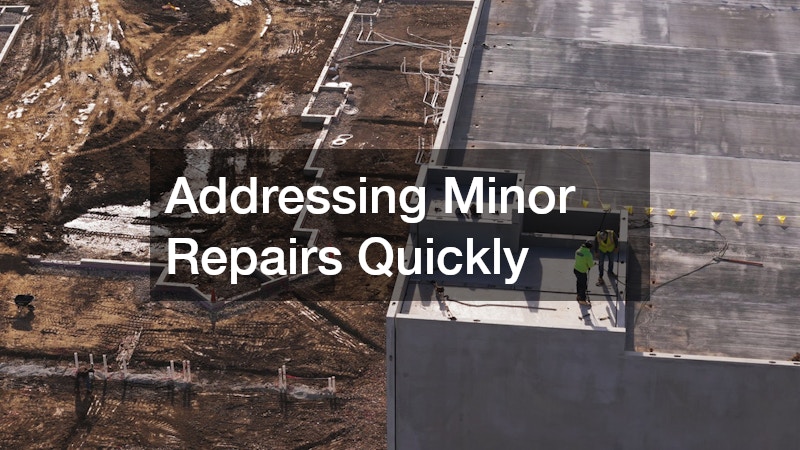Understanding the importance of preventative roof repairs can save property managers time and money. This article will outline a seasonal checklist designed to help property managers effectively maintain the health and longevity of their property roofs. By addressing common questions and concerns, property managers can prepare for weather-related challenges and ensure tenants’ safety and comfort.
How Often Roof Inspections Should be Conducted
Frequency Based on Roof Type
Different roofing materials require varying inspection intervals. Knowing your roof type is essential for scheduling appropriate inspections. For example, asphalt shingles typically need checking every three years, while flat roofs may require annual inspections due to their unique vulnerabilities.
Metal roofs, known for their longevity and durability, might only need inspections every five years, but it’s important to tailor checks to regional weather patterns. Climate and environmental factors, such as salty coastal air, can accelerate wear and should influence inspection frequency. Regular inspections help property managers preemptively address potential vulnerabilities inherent to each roof type.
Understanding the specific maintenance needs of your roofing material not only extends the roof’s life but also adds value to the property by mitigating unexpected expenses. In regions with harsh weather conditions, more frequent inspections might be advisable to spot early signs of damage. Ultimately, a customized inspection schedule ensures property health, safety, and reduced repair costs.
Seasonal Inspection Schedule
Implementing a seasonal schedule ensures timely maintenance and identification of potential issues before they escalate. Spring is crucial for assessing any winter damage, such as snow and ice impacts, which often lead to leaks. Property managers should prioritize roof inspections in early spring to catch any winter-inflicted issues before heavy spring rains set in.
Summer inspections allow property managers to examine the roof during dry conditions. This season provides opportunities to address any spring-discovered issues without interruption from rain. Additionally, summer is the perfect time for checking UV-related wear, which can degrade certain roof types over time.
Finally, fall inspections prepare roofs for the winter challenges ahead by ensuring all preventative measures, like clean gutters and intact flashing, are in place. Residential areas with substantial foliage may benefit from additional gutter checks as often as needed. A well-executed seasonal inspection schedule not only prevents costly repairs but also ensures the roof is fortified against seasonal conditions year-round.
The Critical Areas to Check During an Inspection
Inspecting Roof Membranes
Check for signs of wear or damage to roof membranes, which can lead to leaks and water damage if not addressed promptly. Roof membranes act as a critical barrier against moisture and must be kept intact for optimal roof performance. Property managers should be vigilant about inspecting for tears, blisters, or punctures that may compromise membrane integrity.
Special attention should be paid to areas around equipment stands and roof projections, as these are common sites for membrane damage. The overall condition of the roof membrane is pivotal in preventing water ingress, especially in areas prone to heavy rainfall. Routine checks for pooled water or excessive debris build-up are essential for membrane preservation.
Using technology like infrared scans can help identify hidden areas of moisture beneath the membrane. Early detection through both visual and technological means can avert the costly repairs associated with membrane failure. Regular maintenance of roof membranes reflects a proactive management strategy that safeguards the property’s structural integrity.
Examining Flashing and Sealants
Flashing and sealants play a critical role in preventing water intrusion. Regular inspection helps maintain their efficacy and prevents leaks, which, if unaddressed, lead to significant structural damage. Different types of flashing, such as step or valley flashing, must be checked for corrosion and displacement.
Inadequate or failing sealants can open seams around roof fixtures, allowing moisture to penetrate. During inspections, property managers should look for cracking, drying, or separation of sealants. Immediate resealing of compromised areas is necessary to maintain an airtight seal.
Hiring professional inspectors can provide additional assurance, as they can spot nuanced issues that might go unnoticed. Implementing a regular maintenance regimen for flashing and sealants helps avert water damage and, therefore, reduces repair costs. Properly maintained, these components contribute significantly to the overall weatherproofing of the building.
Preventative Measures That Can Be Taken to Avoid Costly Repairs
Regular Gutter Maintenance
Keeping gutters clean and clear of debris helps prevent water buildup and roof damage, especially during heavy rains. Blocked gutters cause water overflow, which can lead directly to roof damage or foundational issues. Regularly scheduled cleaning and inspection help ensure gutters operate effectively to channel water away from the property.
Autumn is a critical time for gutter maintenance due to falling leaves, which quickly clog gutter systems. Property managers should consider installing leaf guards to reduce the frequency of cleanings required. Ensuring downspouts are free from obstructions is equally vital, as clogs can negate the entire gutter system’s functionality.
Addressing Minor Repairs Quickly
Promptly fixing small issues can prevent them from developing into significant, costly repairs over time. Responding swiftly to minor wear and tear ensures that small cracks or leaks do not expand. By addressing these issues early, property managers significantly extend the roof’s lifespan.
Minor repairs, like replacing missing shingles or resealing a separating joint, require minimal time and cost compared to major overhauls. Property managers should establish a protocol for reporting and addressing even the smallest signs of damage. This proactive approach helps avoid the escalation of minor issues into structural threats.
Preventative roof repairs are crucial for property managers looking to avoid unnecessary expenses and ensure tenant safety. By understanding inspection frequency, critical inspection areas, and effective preventative measures, property managers can maintain their properties efficiently throughout the seasons. Implementing a seasonal checklist as outlined can greatly enhance maintenance strategies and prolong roof lifespans.


